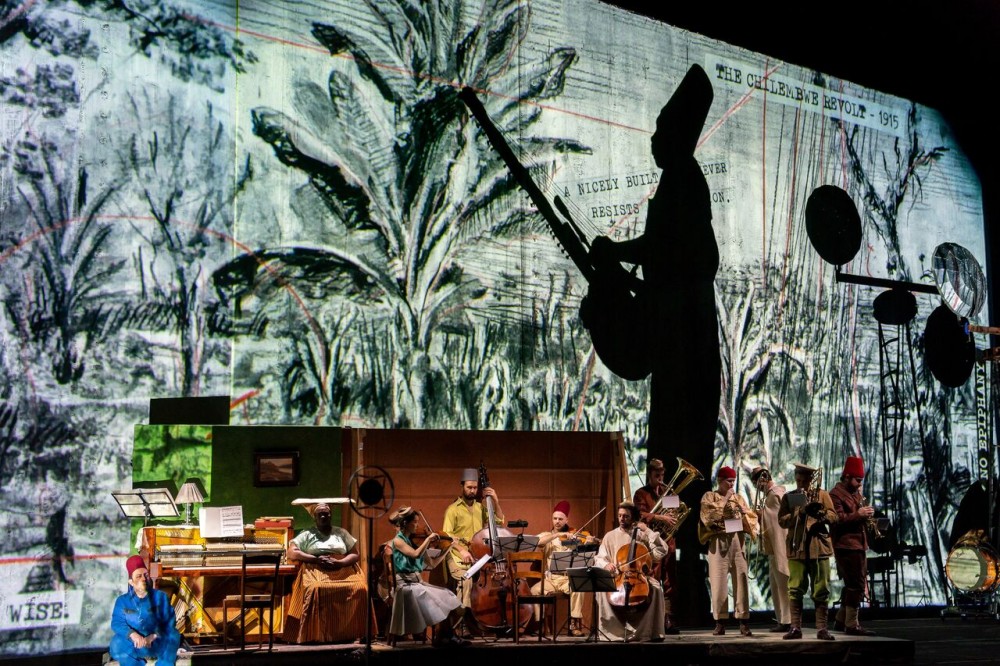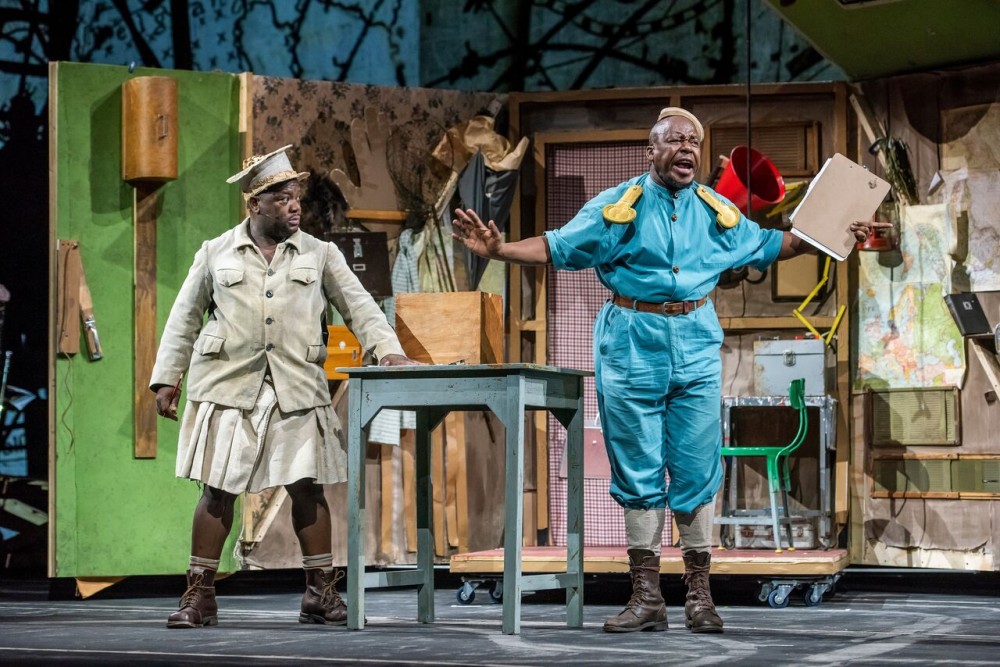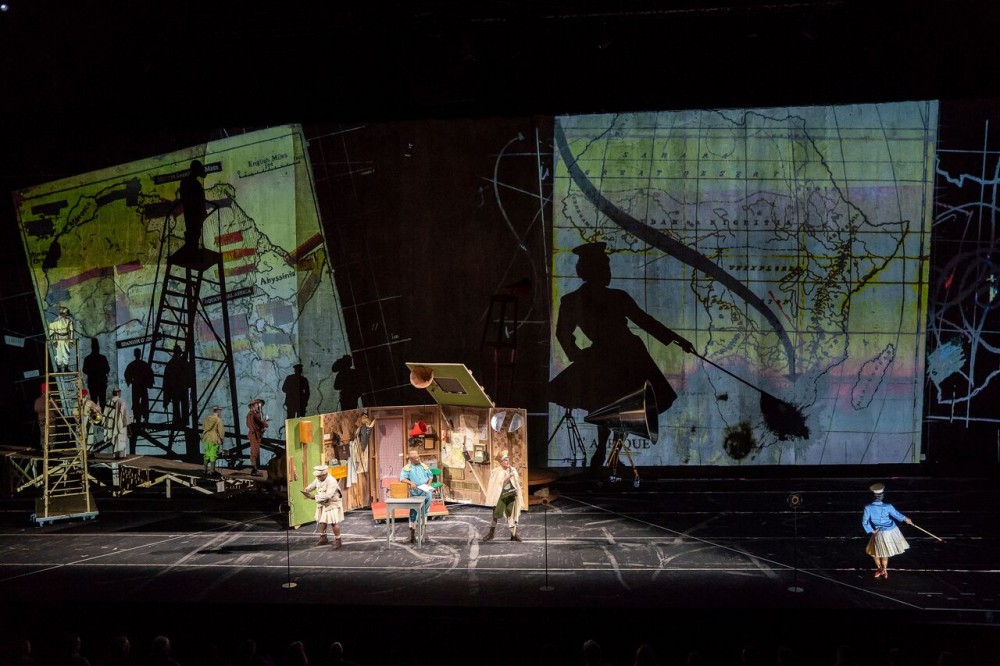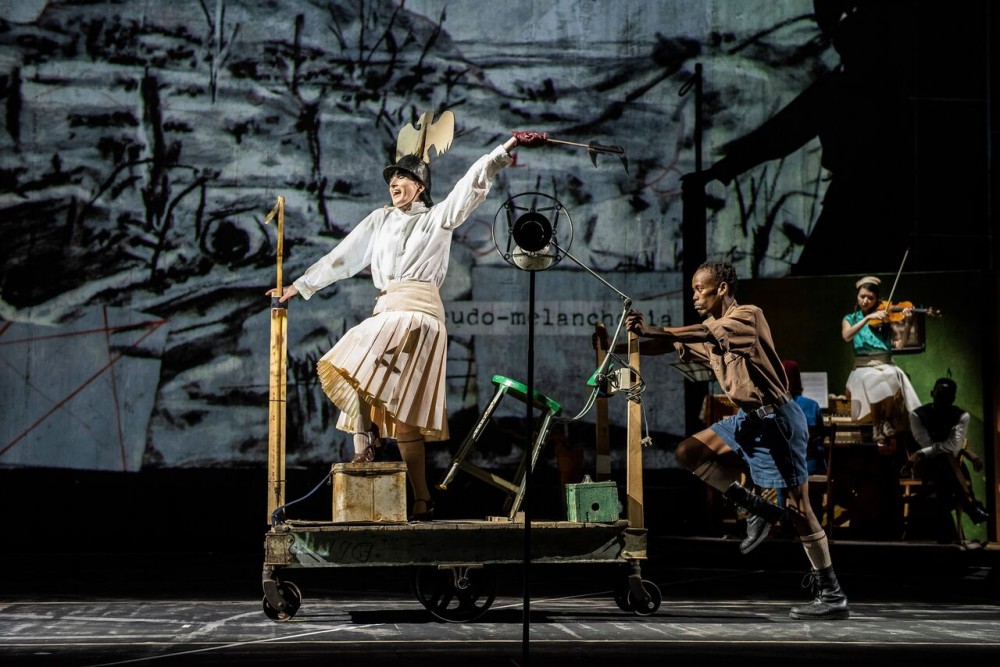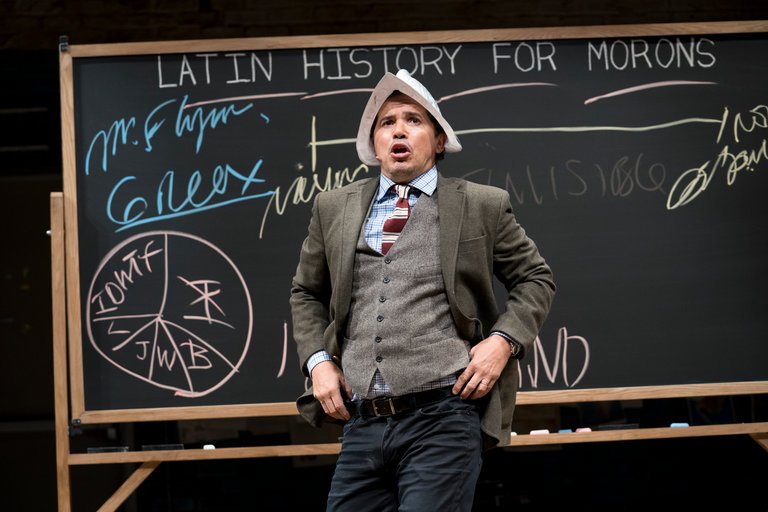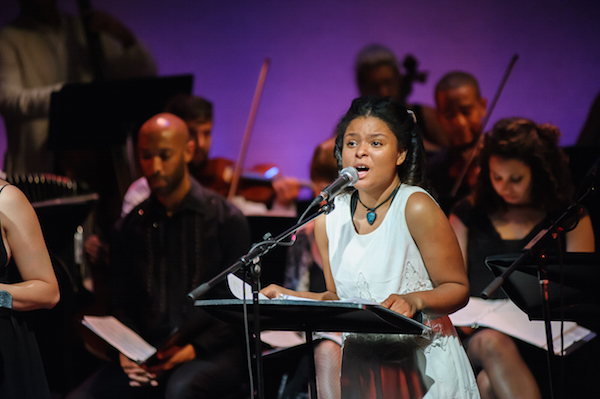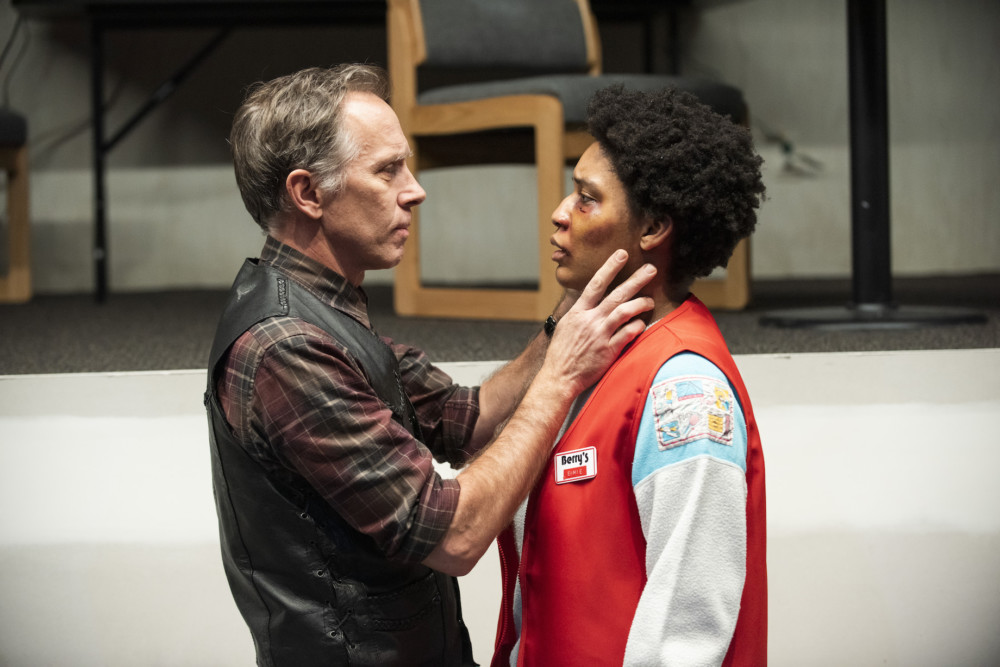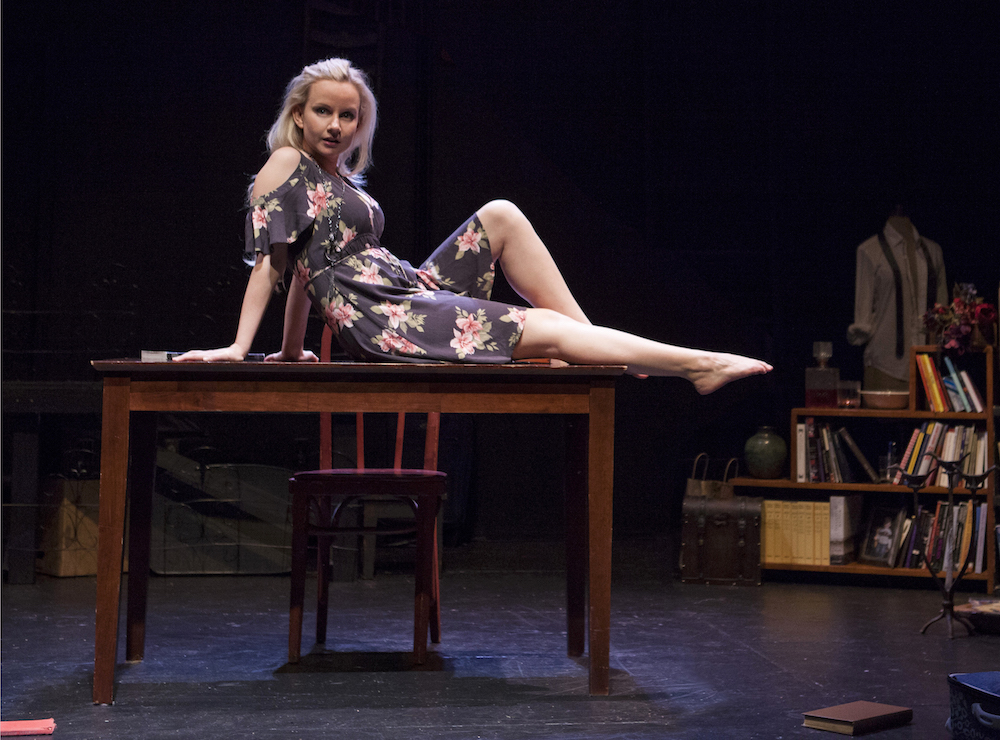by Carol Rocamora
How do we tell stories from history that need to be told, so that we never forget them?
William Kentridge, the amazing multi-disciplinary artist, has found a unique method. It’s called “collage,” and the title of his effort, The Head and the Load, is a stunning artistic achievement on an overwhelming scale, filling the entire cavernous Park Armory. Spellbound audiences attending this jaw-dropping spectacle will certainly never forget the story he’s telling. And that’s exactly his intent.
The brave and brilliant visionary South African artist reveals a chapter in history – largely overlooked – of invisible heroism of great magnitude during World War I. It concerns no less than two million Africans forced by the British, French and Germans to serve as porters and carriers for their warring armies in Africa, as they fought for their respective colonies. These Africans were forced by the Europeans to walk thousands of miles, carrying unimaginable burdens on their backs – including, amazingly, parts of ships, cannons and tanks. Some actually walked north from South Africa to Lake Tanganyika with these gargantuan loads – almost half the distance of the continent. Hundreds of thousands died – many before the first shots were fired on the European content. “The head and the load are the troubles of the neck,” goes a Ghanian saying – hence, the title of Kentridge’s spectacle.
A massive tragedy merits a massive vision to represent it. To dramatize this devastating chapter in history, Kentridge has created what might be called an enormous “installation art” piece – a synthesis of music, movement, sculpture and shadow play. He has assembled an international company (largely African) of forty-five actors, vocalists, dancers, and musicians on a stage that stretches the entire block-long width of the Armory, before an audience of hundreds seated in bleachers. They perform a libretto made from a collage of texts from various sources (African, French, German, etc.) that provide the historical context. The music is a collage, too – including original music composed by Philip Miller and Thuthuka Sibisi, Kentridge’s long time collaborators, as well as excerpts by Ravel, Satie, Hindemith and Schoenberg.
The visual impact is stunning. The gigantic stage is populated by performers clustered in musical and dance ensembles. Huge ladders are placed on the stage, on which actors are perched representing the various colonizing forces. From their towering heights, they look down on a procession of dozens of porters, carrying monstrous loads on their backs – represented by cut-outs that are projected and magnified on the upstage screen that also flashes fragmented maps of Africa, as well as lists of the names of the dead. The effect is overwhelming. I will never forget that march. Nor will I forget the moment when an African woman tries to sing “God Save The King.” She’s joined by a chorus of other voices, until the lyrics break down into unintelligible fragments.
Speaking of the cacophony of many tongues heard throughout the ninety-minute performance, there’s a stylistic strain of Dadaism – a European movement at the time based on the notion that language is nonsense. For Kentridge, this reflects the European incomprehension of the African continent – its culture, its soul, and the suffering of its people.
Finally comes the moment when – on an empty stage – one African porter carries another dying one on his back across the entire expanse. The exquisite humanity he shows for his fellow sufferer sums up the tragedy of colonialism in one indelible image.
“Can one find truth in the fragmented or incomplete?” Kentridge asks in a program note. The answer, clearly, is yes. The marvelous multi-national performers’ names are too numerous to mention here. Please go to the Park Armory to pay respects to their heroic artistic achievement, as they themselves honor the unsung heroes of the past.
Photos: Stephanie Berger
The Head and the Load, conceived and directed by William Kentridge, composed by Philip Miller and Thuthuka Sibisi, choreographed by Gregory Maqoma, at the Park Armory through December 15 www.armoryonpark.org


